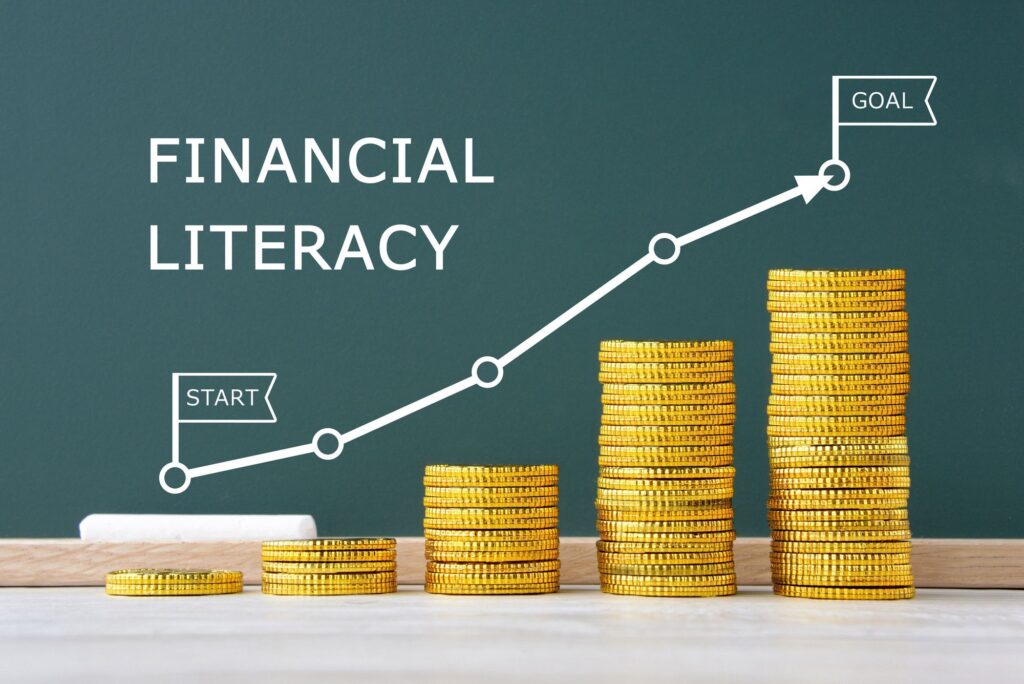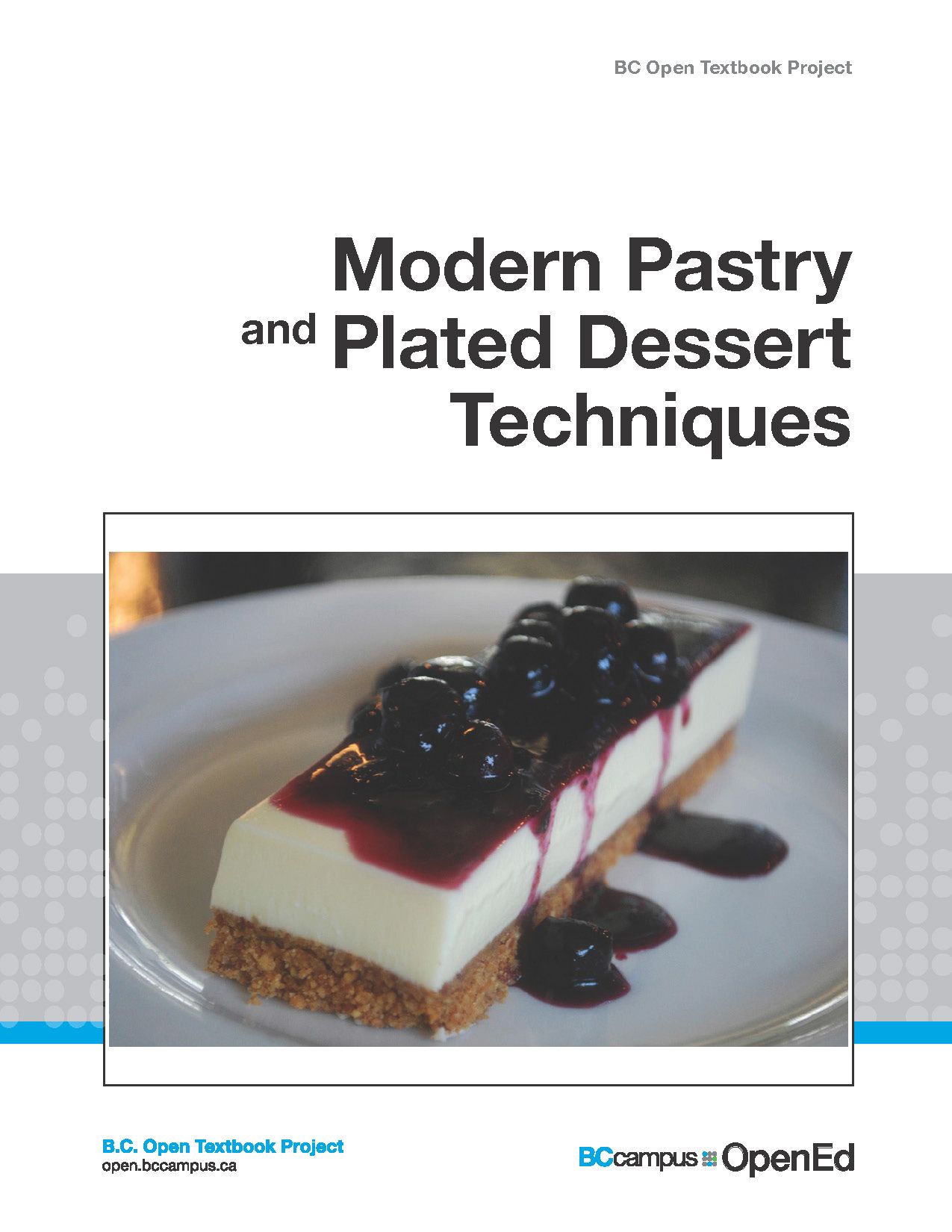As millions of new college graduates step into adulthood, they face a financial landscape that is both challenging and complex, an “economic pressure cooker” as some have aptly described it. The excitement of a first job or a new apartment often contends with the formidable burden of student loan debt, which, for many, averages around $30,000. This immediate financial strain is compounded by rising living costs and stagnant wages, pushing Gen Z college grads into a reality where financial security feels elusive from day one.
Indeed, the statistics paint a stark picture: an overwhelming 97% of recent graduates report lacking the tools to budget or repay their loans, while a significant 35% express regret over taking on debt without fully understanding its implications. This generation, having come of age through periods of unique economic turbulence, seeks clarity, control, and empowerment in their financial lives. They are cautious and skeptical of traditional systems, gravitating towards brands that embody empathy, transparency, and action rather than just offering discounts.
For recent graduates, recognizing the subtle and overt financial pitfalls that target them is paramount. In an environment where every dollar counts and trust is a critical differentiator, understanding which financial products and practices can hinder rather than help is the first step toward building a solid financial foundation. This deep dive will uncover thirteen such perils, drawing directly from the realities and concerns expressed by Gen Z, providing essential insights for navigating the complexities of post-college finance.

1. **Complex Student Loan Packages Without Full Understanding**
The specter of student loan debt looms large over recent college graduates, with many carrying an average of nearly $32,000 from public universities. What’s particularly alarming is that 35% of these graduates regret taking on debt without fully understanding it, a sentiment echoed by 92% who wish they had approached college differently had they known the true extent of their future debt. This regret is a direct consequence of complex student loan packages, where terms, interest rates, repayment schedules, and potential refinancing options are often obscured by dense jargon and a lack of clear explanation during the initial stages.
These complex structures can make it incredibly difficult for young adults, often first-time borrowers, to grasp the long-term financial commitments they are undertaking. Without a comprehensive understanding of their loan obligations, graduates may inadvertently agree to unfavorable terms, struggle to identify the most efficient repayment strategies, or fail to explore options that could mitigate their burden. The pressure to finance an education often overshadows the critical need for meticulous due diligence, leaving graduates vulnerable to the intricacies of their loan agreements.
The lack of understanding isn’t just about the numbers; it’s about the psychological and practical impact on financial planning. Graduates who don’t fully comprehend their loans may miss opportunities to optimize payments, consolidate wisely, or take advantage of deferment or forbearance options when necessary. This informational asymmetry transforms a necessary investment into a source of enduring anxiety, delaying major life milestones and eroding overall financial well-being.
Read more about: Maintenance Money Pit Alert: Unpacking the Real Costs of Car Ownership – Sedans That Will (and Won’t) Drain Your Savings

2. **Financial Products Lacking Budgeting and Repayment Tools**
A staggering 97% of recent graduates admit they lack the essential tools needed to budget effectively or to manage their student loan repayments. This critical deficiency highlights a significant gap in the financial services ecosystem that often targets this demographic. Many financial products, while appearing to offer solutions, fail to integrate user-friendly, actionable tools that empower graduates to gain control over their finances, rather than just facilitating transactions.
Without robust budgeting capabilities, young professionals find themselves adrift in a sea of expenses, unable to track their income against outgoings, identify areas for cost-cutting, or allocate funds strategically. This absence of a clear financial roadmap makes it challenging to meet monthly obligations, save for future goals, and avoid the trap of living paycheck to paycheck. The lack of proactive budgeting tools leaves them reactive to financial pressures, rather than being prepared for them.
Similarly, financial products that do not provide intuitive tools for loan repayment management exacerbate the stress of debt. Graduates need clear dashboards, calculators, and personalized advice within their banking or loan service platforms to understand how different payment strategies impact their principal, interest, and payoff timelines. Products that overlook these functionalities are not merely inconvenient; they are actively failing to meet a fundamental need for financial literacy and control among a generation under immense pressure.
Read more about: Unlocking Financial Freedom: Simple Daily Habits Gen Z Can Use to Build Strong Credit

3. **Financial Products with Hidden Fees**
Gen Z’s unequivocal demand for transparency, particularly regarding “transparent payment options with no hidden fees,” underscores a significant industry pitfall: financial products riddled with opaque charges. These hidden fees, often buried in fine print or introduced after initial engagement, can stealthily chip away at a graduate’s hard-earned money, undermining trust and making financial planning a moving target. For a generation that values authenticity as currency, such practices are a fast track to disengagement.
Whether it’s undisclosed processing fees, unexpected maintenance charges on accounts, or obscure penalties for certain transactions, hidden fees represent a betrayal of the transparency Gen Z craves. These charges, while seemingly small individually, can accumulate quickly, significantly impacting a graduate’s ability to save, invest, or simply keep their head above water. They transform the promise of a financial product into a frustrating and costly experience, turning a planned budget into a continuous guessing game.
The consequence of hidden fees extends beyond monetary loss; it fosters deep distrust. When financial institutions or product providers are perceived as less than honest about their charges, young consumers are quick to disengage and seek alternatives. Brands that treat transparency as a core value, offering plain-language pricing and clear terms, are the ones that will build the long-term loyalty critical for success with this discerning demographic. Any product failing this transparency test becomes a significant financial peril.
Read more about: Unleash Your Inner Mechanic: 15 Essential DIY Car Hacks to Save a Fortune on Maintenance

4. **Products with Misleading Marketing and Unclear Pricing**
In a crowded marketplace, where Gen Z and millennial consumers increasingly base purchase decisions on a brand’s mission and stated purpose, misleading marketing and unclear pricing are not just poor practices; they are critical differentiators that drive disengagement. Financial products that rely on vague promises, deceptive advertisements, or convoluted pricing structures represent a significant trap for recent graduates who are already navigating a complex economic landscape.
Misleading marketing can entice graduates with alluring benefits that either don’t materialize or come with strings attached that are intentionally obscured. This can range from promotional interest rates that skyrocket after a short period, to “low fee” accounts that have numerous exceptions, or investment opportunities presented with unrealistic expectations. Such tactics play on the financial vulnerabilities and inexperience of young adults, luring them into products that ultimately do not serve their best interests.
Unclear pricing further compounds this problem. When the true cost of a financial product or service is not immediately apparent, graduates cannot make informed comparisons or responsible decisions. This lack of clarity prevents them from accurately budgeting for their financial commitments, potentially leading to unexpected expenses and increased debt. For a generation that values clarity and control, products presented with anything less than plain-language pricing and honest messaging about their deliverables are inherently detrimental.
Read more about: 22 Car Salesman Tricks They Don’t Want You Knowing

5. **Financial Products Relying Solely on Short-Term Promotions**
While discounts and promotions might initially attract recent college graduates, the context explicitly states that “empowerment is what keeps them there.” Financial products that rely exclusively on short-term offers without providing substantial long-term value, educational content, or tools for sustained financial wellness, represent a significant trap. These products often prioritize acquisition over genuine customer financial health, offering fleeting benefits that do little to build lasting stability.
Such short-term enticements—like introductory cashback bonuses, temporary low-interest rates, or sign-up incentives—can distract graduates from scrutinizing the underlying value, fees, or suitability of a product for their long-term goals. They might be drawn into an account or credit product because of an immediate reward, only to find that the ongoing features are suboptimal, the fees are high, or the product doesn’t align with their need for financial literacy and control once the promotional period ends.
The real value for Gen Z lies in tools and content that make them feel informed and confident, such as financial planning resource hubs, interactive budgeting tools, or community forums for money talk. Products that offer only a transactional, short-term gain without fostering this sense of empowerment miss the mark and can leave graduates in a worse financial position than when they started, having chased a temporary perk instead of building a robust financial strategy.
Read more about: The Smart Shopper’s Guide: Unlocking Peak Savings on Your Next Washer and Dryer Purchase

6. **High-Interest Credit Cards as an Emergency Fund**
Establishing an emergency fund is highlighted as a top priority for recent graduates, with experts recommending at least six months’ worth of expenses saved. The peril of not having this cushion is that unforeseen expenses – a medical bill, a car repair, or an unexpected job loss – can compel graduates to rely on high-interest credit cards. Using credit cards in this manner transforms a financial safety net into a debt trap, rapidly escalating the cost of emergencies and hindering long-term financial progress.
When a graduate uses a high-interest credit card to cover an unexpected expense, they are effectively taking on debt at rates that can quickly compound, making repayment significantly more difficult. What might be a manageable $500 expense can balloon into thousands due to interest, especially if only minimum payments are made. This cycle of debt is particularly dangerous for those already under financial strain and struggling to manage student loans and rising living costs.
Janelle Sallenave of Chime emphasizes, “Having a small emergency cushion can go a long way to keep you out of more debt.” The absence of such a fund, coupled with the ready availability of high-interest credit, creates a scenario where graduates are pushed further into financial precariousness, using expensive short-term solutions for long-term needs, rather than building the resilience that a dedicated emergency savings account provides.
Read more about: Credit Card Debt at Record Highs: 11 Expert Strategies to Take Control of Your Finances and Pay Down Balances

7. **Easy Credit Products that Encourage Overspending**
Living within one’s means is a critical piece of advice for recent graduates, especially when juggling debt repayment and the imperative to save. Products that offer easy, readily available credit without adequate safeguards or educational components can inadvertently encourage overspending, directly undermining this principle and leading to mounting credit card debt. While credit can be a useful tool, its facile accessibility can be a significant pitfall for those just learning to manage their finances.
These “easy credit” products, often marketed with appealing limits and minimal initial scrutiny, can give graduates a false sense of financial freedom, making it simple to spend beyond their actual income. This behavior is particularly dangerous given that housing, groceries, transportation, and healthcare costs are steadily climbing, already pushing many to the brink. Without a strong personal budget and discipline, easy credit becomes a pathway to accumulating unsustainable levels of consumer debt.
Such products contribute to a lifestyle creep that is difficult to reverse, where discretionary spending outpaces income, leaving little room for essential bills, debt repayment, or savings. The advice to “follow a budget” becomes impossible to maintain when credit enables impulsive or unnecessary purchases. For recent graduates, the allure of easy credit can quickly turn into a burden, entangling them in a cycle of debt that thwarts their efforts to establish financial stability and prepare for a secure future.
Read more about: Buyer Beware: 8 Budgeting Traps That Can Derail Your Financial Future

8. **Banking Services with Excessive Overdraft Fees and Limited Early Pay Options**
One of the immediate financial challenges for recent graduates is managing monthly bills, a concern shared by one-third of survey respondents. While online bill pay is a helpful suggestion to avoid late payments, a significant pitfall lies in banking products that fail to support this proactive management. Many traditional bank accounts come with onerous overdraft fees, which can quickly spiral into further debt for those already living paycheck to paycheck and potentially running short on cash between paychecks.
These punitive fees directly contradict Gen Z’s desire for predictability and control in their finances. When an unexpected expense or a slight miscalculation in budgeting leads to an overdraft, a fee of $30 or more can severely impact a graduate’s ability to cover other essential costs. This creates a cycle where banks profit from the financial precarity of young adults, rather than providing empathetic solutions that align with their real-world economic pressures.
Furthermore, the absence of features like early direct deposit can exacerbate cash flow problems. As noted by financial experts, having money credited to an account two days faster can make a substantial difference in avoiding late payments and bridging gaps before the next paycheck arrives. Banking services that do not offer such flexibility, or indeed charge for it, are essentially hindering graduates from effectively managing their liquidity and proactively preventing financial stress.
For a generation that values authenticity and transparency, financial products that obscure or heavily rely on these types of fees erode trust. Graduates are seeking brands that understand their reality and offer practical tools to navigate it better, not those that profit from their occasional financial missteps. A banking product that lacks fee-free overdraft solutions or early access to wages fails to meet these fundamental needs, becoming a significant financial hurdle.

9. **Financial Products that Fail to Encourage and Facilitate Dedicated Emergency Savings**
While addressing student loan debt is paramount, establishing an emergency fund is unequivocally a top priority for recent graduates. Experts recommend saving at least six months’ worth of expenses, emphasizing that even a small cushion “can go a long way to keep you out of more debt.” However, many financial products and services, particularly those aimed at young adults, often fall short in actively encouraging or providing intuitive tools to build this crucial safety net.
The peril here isn’t just the lack of an emergency fund itself, but the absence of financial products designed to simplify and automate its creation. Graduates, who often feel financially unprepared, need clear, actionable strategies embedded within their banking experiences. Products that solely focus on transaction processing or debt management, without prominently featuring dedicated savings goals or automated transfer options for emergencies, overlook a foundational aspect of financial wellness.
Without easily accessible, goal-oriented savings features, graduates are more likely to let emergency savings slide down their priority list, especially when faced with competing demands like student loan payments and daily expenses. This omission by financial products can inadvertently push individuals towards riskier coping mechanisms when unforeseen events occur. For instance, without a dedicated fund, a sudden car repair or medical bill could force them to resort to high-interest credit cards, transforming a manageable expense into a debt trap, as explored earlier.
The most effective financial products for this demographic would proactively guide them toward building resilience. This could involve high-yield savings accounts that clearly delineate “buckets” for emergency funds, or automated savings programs that make setting aside money a seamless, almost unconscious habit. Products that neglect these functionalities contribute to a cycle of reactive financial decision-making, rather than empowering graduates to build long-term stability.
Read more about: Beyond Broke: Some Essential Money Habits That Define the Financially Savvy

10. **Retirement Plans Lacking Clear Education and Accessibility for Young Investors**
The prospect of retirement often feels distant for recent college graduates, yet investing in their 20s allows them to harness the immense power of compound interest. Despite this long-term benefit, many financial products and employer-sponsored retirement plans fail to adequately educate young professionals on the ‘why’ and ‘how’ of early retirement savings, making these essential vehicles feel complex and inaccessible. This lack of clarity is a significant detractor for a generation already skeptical of traditional financial systems.
While 401(k)s and IRAs (both traditional and Roth) offer robust avenues for retirement savings, the jargon surrounding contribution limits, tax implications, and investment choices can be overwhelming. Financial products that simply present these options without comprehensive, user-friendly educational content miss a critical opportunity to engage new graduates. They need clear explanations of how company matches work, the benefits of pre-tax versus after-tax contributions, and the long-term impact of seemingly small, consistent investments.
The “Empowerment Over Offers” principle suggests that Gen Z is “hungry for tools and content that make them feel informed and confident in their choices.” Retirement products that do not provide such resources—like interactive calculators demonstrating compound growth, plain-language guides, or even community forums for “money talk”—are failing to empower. Instead, they become another intimidating financial hurdle that many graduates choose to postpone engaging with, to their long-term detriment.
Moreover, the nuances of specific retirement vehicles, such as the potential to withdraw up to $10,000 from a Roth IRA penalty-free for a first home purchase, are valuable pieces of information that often get lost in the complexity. Products that streamline this information and highlight such unique benefits tailored to young adults could significantly increase engagement, helping graduates balance immediate goals with future security rather than seeing them as mutually exclusive.

11. **Generic Savings Accounts Without Goal-Oriented Features**
Beyond the critical need for emergency and retirement funds, recent graduates also harbor diverse shorter-term financial goals—from buying a house or getting married to taking a dream vacation. While the general advice to “save for your goals” is sound, generic savings accounts that offer little more than a place to deposit money fall short in supporting this specific, goal-driven saving behavior. This lack of specialized functionality makes it harder for graduates to track progress and maintain motivation for diverse objectives.
The challenge for young savers is often psychological as much as practical. Commingling funds for various goals within a single, undifferentiated savings account can make it difficult to visualize progress for each objective. It blurs the lines between discretionary spending money and dedicated savings, increasing the temptation to dip into funds earmarked for specific purposes. This lack of clear segmentation can undermine even the most disciplined saving efforts.
Financial products that address this psychological barrier by offering customizable, goal-oriented features are far more effective. For instance, the context highlights how some savings account holders can create “custom savings categories, called ‘buckets,’ and devote portions of their money to each.” Products that embrace such innovative features empower graduates to allocate funds strategically, creating a tangible link between their daily financial habits and their aspirational life goals.
Without these tailored tools, graduates may struggle to build momentum for larger purchases or experiences. A generic savings account, while fulfilling a basic function, misses the opportunity to transform saving into an engaging and achievable pursuit, aligning perfectly with Gen Z’s preference for tools that offer clarity, control, and help them make smarter financial moves for their future.

12. **Financial Platforms Without Integrated, Unbiased Financial Planning Resources**
A crucial piece of advice for recent graduates navigating their complex financial landscape is to “meet with a financial advisor,” whether a professional or a trusted relative. This underscores a significant gap in many financial products targeting this demographic: the lack of integrated, unbiased financial planning resources. While some products focus on transactions or single-purpose solutions, few offer a holistic approach to financial guidance, leaving graduates feeling unsupported in their overall wealth-building journey.
Gen Z craves clarity, control, and empowerment in their financial lives, yet the financial services ecosystem often fails to provide accessible avenues for comprehensive planning. Relying solely on external advisors, who can be costly or difficult to find, places an undue burden on young adults already grappling with student debt and tight budgets. Products that do not embed or seamlessly connect users to credible financial literacy content and planning tools are missing a vital component of what this generation values.
The context explicitly champions brands that offer “financial planning resource hubs” and “interactive budgeting tools” as essential for empowerment. Products that fail to include these elements are not merely lacking features; they are failing to be partners in a graduate’s financial journey. Without an integrated source of guidance on topics like balancing debt repayment, savings, and investments, graduates may make suboptimal decisions or feel overwhelmed, leading to persistent financial anxiety.
Companies have an opportunity to “add value through partnerships,” collaborating with financial wellness platforms or nonprofit educators to offer credible, helpful content. Financial products that ignore this holistic need and instead present isolated solutions without broader context or guidance are ultimately less effective. They fail to address the overarching desire for sustained wealth building, a core theme of the second section’s outline, and ultimately fall short of earning long-term loyalty from a discerning generation.
Read more about: 14 Essential HR Manager Interview Questions: Unlocking Success with Expert Strategies

13. **High-Risk Investment Products Marketed Aggressively Without Clear Risk Disclosure**
For recent college graduates eager to grow their money and achieve financial security, the world of investing can seem both appealing and intimidating. While “investing early gives your money more time to grow,” the proliferation of high-risk investment products, often marketed aggressively without adequate disclosure of inherent volatility and potential for loss, presents a significant peril. This is particularly dangerous for inexperienced young investors who may be swayed by the promise of quick returns in an “economic pressure cooker” environment.
The “Forbes” writing style emphasizes an “analytical and forward-looking perspective” on investment and market trends, indicating the importance of sound financial principles. However, some products, especially those leveraging social media trends or complex financial instruments, can exploit a graduate’s limited financial literacy. These offerings may downplay the risks involved, fail to explain market fluctuations, or present unrealistic expectations, leading young investors to make ill-informed decisions that could result in substantial capital loss.
Gen Z’s skepticism of traditional systems and their demand for transparency mean they value clear and honest messaging. Investment products that utilize vague promises, deceptive advertisements, or convoluted pricing structures—or, critically, fail to plainly articulate the downside risks—are antithetical to this demand. Such products do not empower; rather, they can lead to significant financial setbacks, eroding trust and discouraging future participation in responsible wealth building.
The most responsible financial products would offer clear, concise, and accessible information about investment risks, potential returns, and suitable time horizons. They would prioritize educational content over aggressive sales pitches, ensuring graduates understand the implications of their choices. Products that prioritize short-term gains for the provider over the long-term financial health and education of the young investor are among the worst financial pitfalls targeting this vulnerable demographic, hindering their journey toward sustained financial stability.
Navigating the financial landscape as a recent college graduate is undoubtedly a monumental task, fraught with complexities and opportunities alike. By consciously avoiding these thirteen financial products and practices – from opaque loan terms and hidden fees to inadequate savings tools and aggressive, high-risk investments – graduates can proactively safeguard their financial well-being. The path to financial success isn’t about chasing fleeting promotions or succumbing to predatory tactics; it’s built on a foundation of transparency, informed decision-making, and the diligent pursuit of long-term financial health. For this discerning generation, empowerment and trust are the true currencies, guiding them towards a future where financial security is not just a dream, but a tangible reality achieved through smart, mindful choices.




